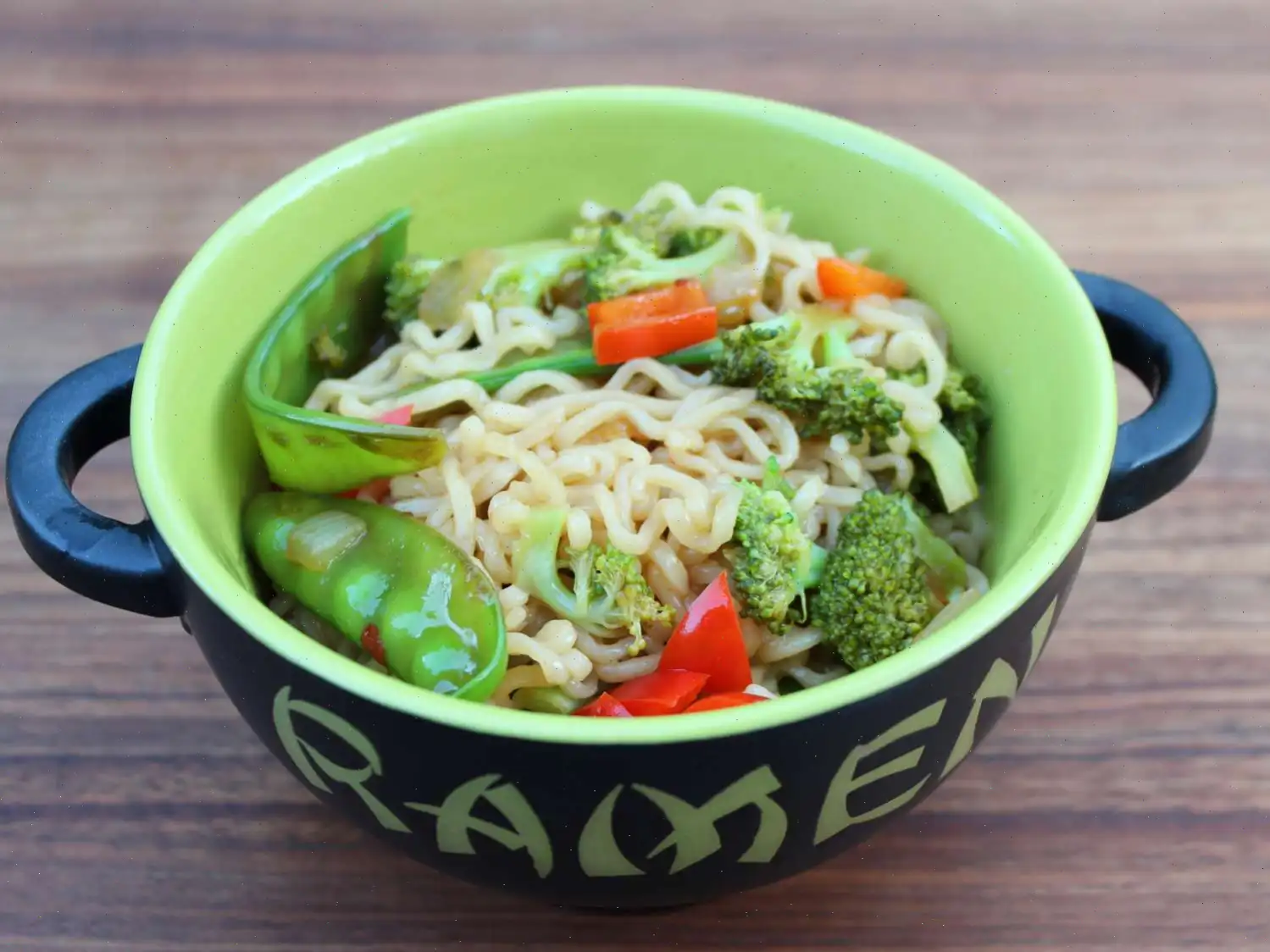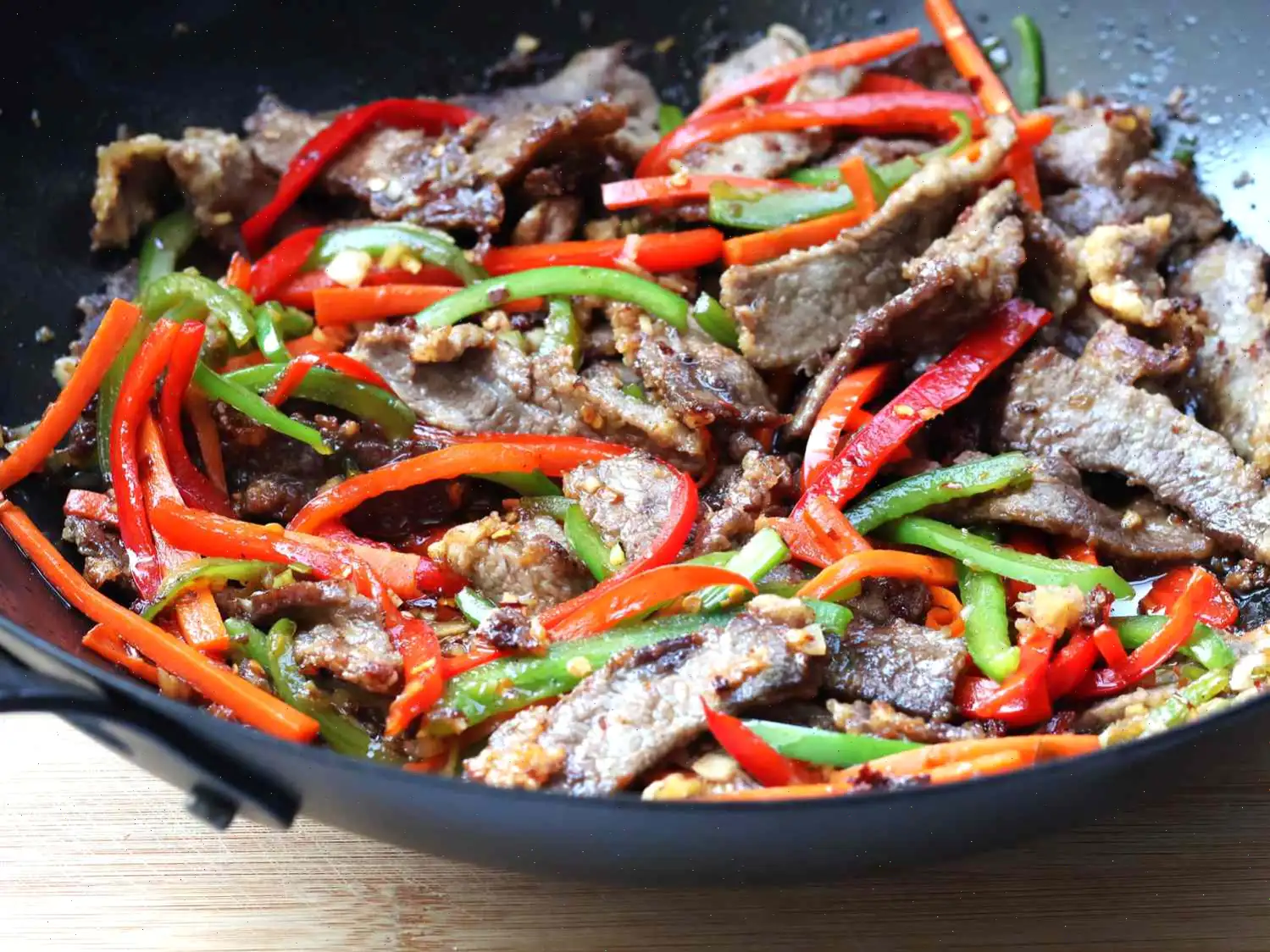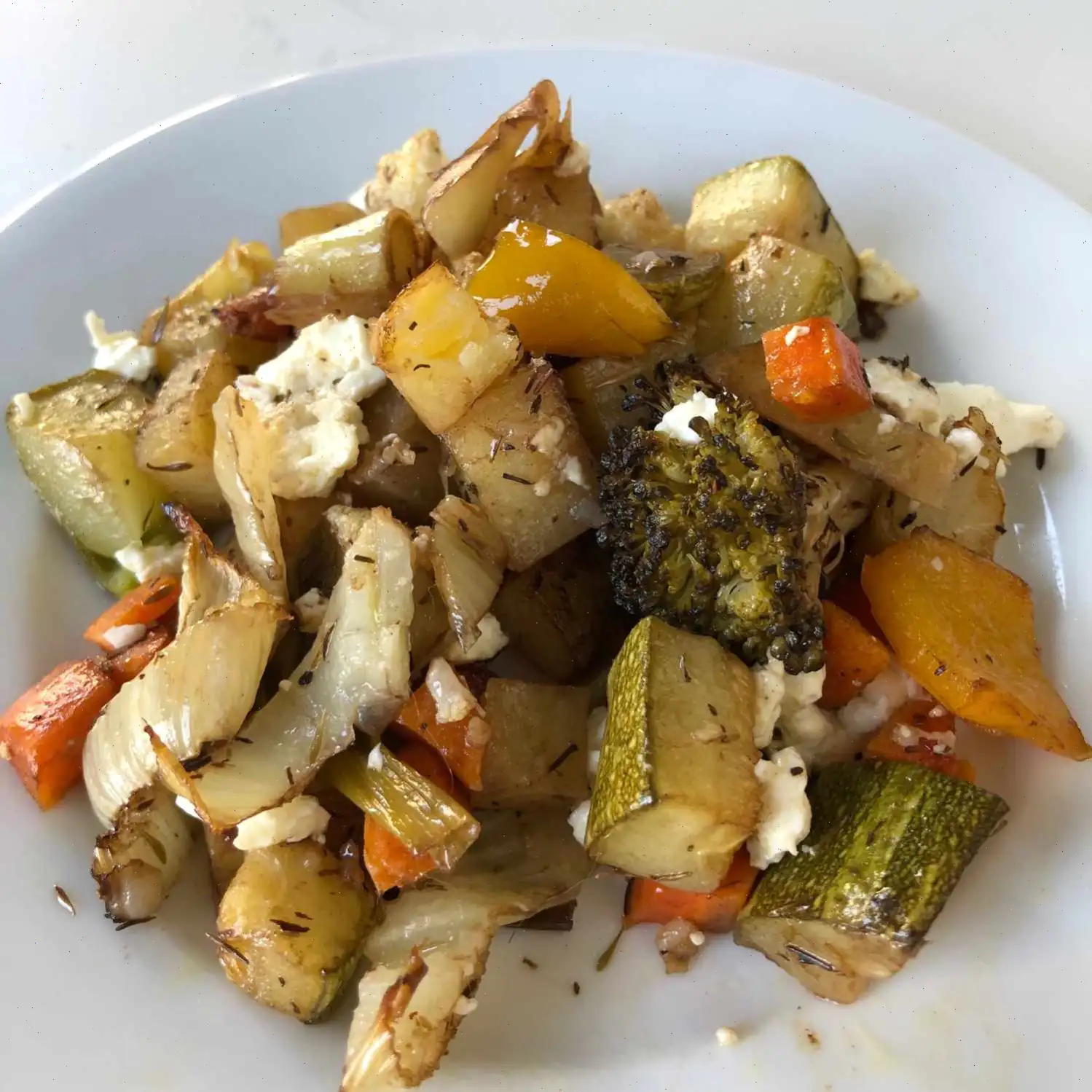
Ramen Vegetable Stir Fry Recipe
Ramen Noodles with Vegetables in Sweet Thai Chili Sauce
Ingredients
- 1/2 cup low-sodium soy sauce
- 2 tablespoons lime juice
- 2 tablespoons sweet Thai chili sauce
- 1 tablespoon maple syrup
- 1/4 teaspoon ground ginger
- 1/8 teaspoon red pepper flakes
- 6 ounces ramen noodles (2 packages), flavor packets discarded
- 2 tablespoons sesame oil
- 2 cloves garlic, minced
- 1/2 cup chopped onion
- 1/2 cup chopped red pepper
- 2 1/2 cups broccoli florets
- 4 ounces sugar snap peas
Directions
Step 1: In a small bowl, combine the soy sauce, lime juice, Thai chili sauce, maple syrup, ground ginger, and red pepper flakes. Stir until the mixture is smooth, then set it aside.
Step 2: Bring 4 cups of water to a boil in a pot. Discard the flavor packet that comes with the ramen noodles. Add the ramen noodles to the boiling water and cook for 4 to 5 minutes, or until the noodles are tender. Drain the noodles and set them aside.
Step 3: In a skillet, heat the sesame oil over medium-high heat. Add the minced garlic, chopped onions, red peppers, broccoli florets, and sugar snap peas. Cook and stir for about 5 minutes, or until the vegetables have softened.
Step 4: Reduce the heat to low. Add the prepared sauce mixture from Step 1 to the skillet. Stir the sauce into the vegetables and cook for an additional 3 minutes, or until the sauce has thickened.
Step 5: Add the cooked ramen noodles to the skillet and toss to combine with the sauce and vegetables. Serve warm and enjoy!
Nutrition Facts (per serving)
- Calories: 196
- Total Fat: 9g (11% Daily Value)
- Saturated Fat: 2g (8% Daily Value)
- Cholesterol: 0mg (0% Daily Value)
- Sodium: 1427mg (62% Daily Value)
- Total Carbohydrates: 25g (9% Daily Value)
- Dietary Fiber: 5g (19% Daily Value)
- Total Sugars: 9g
- Protein: 8g (16% Daily Value)
- Vitamin C: 111mg (124% Daily Value)
- Calcium: 80mg (6% Daily Value)
- Iron: 2mg (12% Daily Value)
- Potassium: 606mg (13% Daily Value)
* Percent Daily Values are based on a 2,000 calorie diet. Your daily values may be higher or lower depending on your calorie needs.
** Nutrient information is not available for all ingredients. Amount is based on available nutrient data.
The History of Ramen Vegetable Stir Fry
Ramen, originally a Japanese adaptation of Chinese wheat noodles, gained widespread popularity in the early 20th century. While traditional ramen is served as a soup, stir-frying noodles with vegetables is a more modern twist that emerged as a quick, home-friendly meal in urban Japan. This version, combining fresh vegetables and ramen in a flavorful sauce, reflects global culinary influences, particularly from Southeast Asian cuisines that emphasize lime, chili, and soy flavors.
Regional Variations
Across Asia, vegetable stir fry with noodles takes many forms. In Japan, it might include bok choy, shiitake mushrooms, and a soy-based sauce, whereas in Thailand or Vietnam, lime, chili, and sweet sauces dominate the flavor profile. In Western countries, chefs often experiment with ramen noodles for their convenience, using locally available vegetables like broccoli, red peppers, and sugar snap peas. This dish illustrates the adaptability of ramen, transcending its original soup-based form to become a versatile stir-fried meal enjoyed worldwide.
Difference from Similar Dishes
While it may resemble chow mein or yakisoba, ramen vegetable stir fry is unique in its use of instant ramen noodles, which have a distinct texture and quick cooking time. Unlike traditional stir-fried noodles that require specific types of wheat noodles, this recipe leverages the soft, springy quality of ramen. Additionally, the lime-chili-sweet sauce combination gives it a bright, tangy, and slightly spicy flavor that sets it apart from soy-heavy or oyster sauce-based stir fries.
Where Its Usually Served
This dish is commonly enjoyed as a quick weeknight dinner at home, in casual eateries, or as part of bento-style lunches. Its fast preparation and customizable ingredients make it a favorite for busy individuals and students. In some modern Asian fusion restaurants, ramen stir fry is also served as a side dish or appetizer, often garnished with sesame seeds, fresh herbs, or a fried egg on top for extra richness.
Interesting Facts
- Instant ramen was invented in 1958 by Momofuku Ando in Japan and originally designed to be an affordable, convenient meal.
- The combination of vegetables and ramen makes this dish not only flavorful but also nutrient-dense, providing fiber, vitamin C, and plant-based proteins.
- Adding a squeeze of lime juice at the end enhances the dishs complexity, a trick borrowed from Thai and Vietnamese cuisine.
- Ramen vegetable stir fry can be easily customized for dietary preferences, including vegan, gluten-free, or low-sodium variations.
- This dish has become popular worldwide, particularly in North America, for its simplicity, speed, and bold flavor profile.








